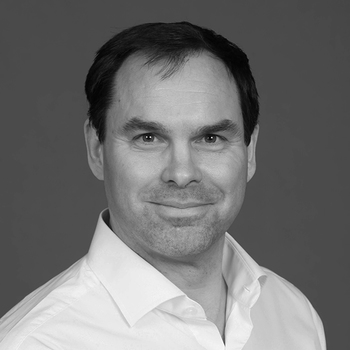Phonak Virto™ Paradise: Custom-Made, Discreet Design and Unrivaled Sound Quality

AudiologyOnline: What sets Virto P apart from other custom products in the market?
Nikolas Klakow, AuD: The first way Virto P is unique is the made-for-all (MFA) connectivity offered in the Virto P-312 device. Connecting to any Bluetooth® device sets Phonak apart from the rest of the hearing instrument manufacturers. From connecting to computers to smart televisions and even older flip-phones – no matter if a device is Android or Apple, Paradise allows for hands-free communication. Add that to the benefit of direct reception of a Roger signal with RogerDirect. Virto P offers patients a discreet, flexible, and complete hearing solution.
AudiologyOnline: You mentioned Roger; how does Roger work with Virto P?
Nikolas Klakow, AuD: Roger is a digital wireless system that transmits a signal from a remote microphone to the hearing aid. For several years now, Roger microphones could send the signal directly to the installed RogerDirect receiver inside the hearing aid, forgoing the need for an external receiver. This innovation made it possible for Virto P-312 hearing aids to also benefit from improved listening ability over distance and in very noisy situations, thanks to their Roger system.
AudiologyOnline: Can you also have Roger benefits with a Virto P-Titanium?
Nikolas Klakow, AuD: Virto P-Titanium is Phonak’s smallest custom hearing aid, thanks to its unique design and build. While it does not have the wireless chip to allow for direct streaming, it can be built with a tele-coil, which can pick up a signal from the Roger NeckLoop. The Roger NeckLoop is the receiver for the signal sent from the microphone, like RogerOn, and will relay the signal to the Virto P-Titanium invisible-in-the-canal (IIC) hearing aid via an induction loop. This will allow the very same benefits of listening with Roger as with Virto P-312 devices.
AudiologyOnline: You brought up the unique design of Virto P-Titanium; what makes it so special?
Nikolas Klakow, AuD: This is the second way in which Virto Paradise is truly unique. Normally, custom hearing aids are modeled and built using acrylic material in a 3D printer. To have sufficient strength, the acrylic shell needs to have a certain thickness. Phonak uses that same concept, but rather than using acrylic that a laser fuses into a shell, titanium powder is used instead. The titanium shell of the Virto P-Titanium will provide 15 times the strength of an acrylic shell in half the thickness. That slimmer shell wall will allow more room inside to be used for larger and stronger receivers to fit more severe losses, or for more open vents to improve sound quality for those with milder, high-frequency hearing losses. Phonak is the only hearing instrument manufacturer with the capability of creating a custom fit, metal shelled hearing aid.
AudiologyOnline: Can custom products like Virto P be used to fit severe hearing loss?
Nikolas Klakow, AuD: While custom in-the-ear hearing aids are not the first devices that come to mind for fitting a person with severe hearing loss, Virto P should be an option for such patients if the features of ITEs are sufficiently important for the wearer. Depending on the size of the ear canal and concha bowl, the Virto P-312 can be built with an ultra-power (UP) receiver providing 70dBHL peak grain and a high-frequency average gain of 62dB. Also, even the Virto P-Titanium can be built with a super-power (SP) receiver capable of providing 60dB peak gain. Virto P should be an option for patients who want the benefits of custom hearing aids and have a hearing loss up into the severe loss range.
AudiologyOnline: What is the difference between Virto M and Virto P?
Nikolas Klakow, AuD: The difference between the newer Paradise platform and the previous Marvel platform for Virto can be heard in the processing of sounds. The Paradise platform has made three improvements to the Adaptive Phonak Digital fitting formula (APD 2.0). Firstly, to provide greater comfort in noise and greater dynamic range due to adaptive compression speeds. Secondly, providing better speech intelligibility for loud speech in noise with more linear high-level gain. And thirdly, greater comfort at the first fit with a new pre-calculation for mild and moderate hearing losses. Beyond APD 2.0, the 90 level Virto P will also have a Speech Enhancer feature to identify and increase soft speech signals to aid in hearing speech that is very quiet or distant. The Virto P-312 90 will also add Dynamic Noise Cancellation which combines noise reduction and directionality to provide a greater signal to noise ratio. Best of all, the wearer can control that feature with the myPhonak app.
AudiologyOnline: You’ve mentioned connectivity being unique to Phonak; how does Virto P specifically handle connectivity?
Nikolas Klakow, AuD: The most significant update of connectivity from the Marvel to the Paradise platform comes in the form of two active Bluetooth connections. Both platforms were able to connect to eight Bluetooth devices; however, Marvel could only support one active connection at a time. Patients can now have two mobile phones connected to their Virto P and switch between them without needing to disconnect a Bluetooth pairing. This seemingly small change can make a significant difference in usability of the hearing aid in today's connected world.
For more information on Phonak Virto Paradise, click here.


